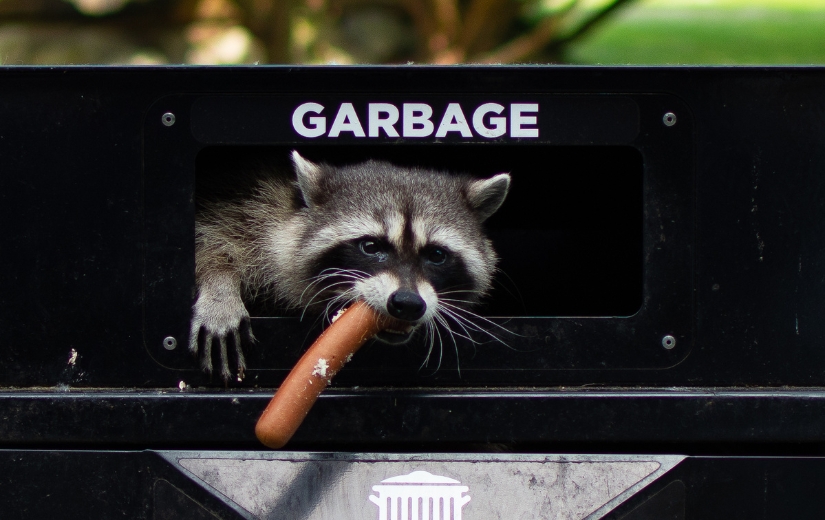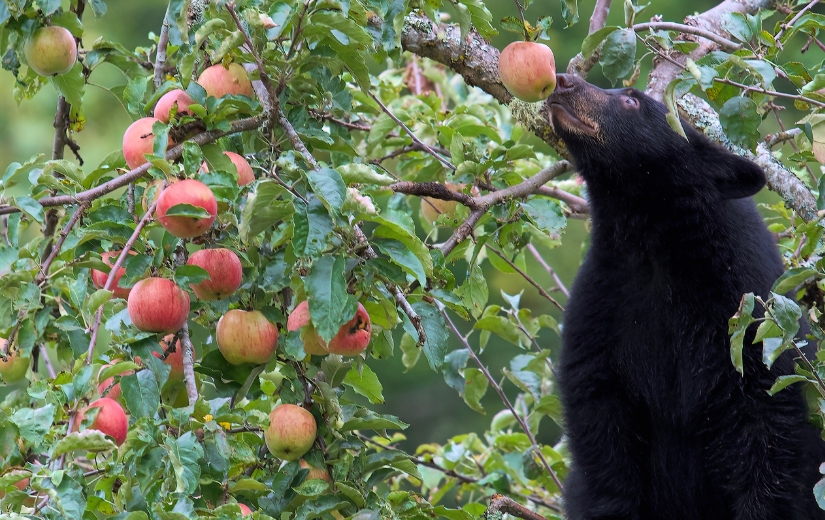Human-wildlife conflicts: What they are and how to prevent them
Whether you live in an urban or rural environment, you will likely encounter wildlife in your community.
Human-wildlife conflicts in urban locations occur when the interests of humans and wildlife don’t align. Some examples include domestic cats predating on local bird species, rats or mice in your home and deer grazing on gardens.
Understanding what risk factors can contribute to conflicts between you and your wild neighbours, and learning how to minimize them can keep people, wildlife and companion animals safe throughout the year.

How to minimize the risk of having human-wildlife conflicts
Wild animals are drawn to food and shelter – if this is available near your home, you may be attracting wildlife.
You can help prevent human-wildlife conflicts with the following steps:
Reduce shelter opportunities for wildlife near your home
To minimize the presence of shelter attractants, maintain the outdoor area around your house so that greenery is managed and ideally located a few feet away from your home. Bushes close to your house provide a highway for rodents to travel along and give them shelter while looking for entry points.
Keep sheds locked and check for entry points where wildlife could enter (for example, through gaps under the door). Coyotes may occasionally den underneath sheds, and raccoons can take up residence under decks, in sheds or in attics. Be mindful of these entry points and remove access to them.
Do not feed wildlife
Feeding wildlife, regardless of your intentions, often leads to wild animals losing their natural fear of people. This is the most severe form of human-wildlife conflict because loss of fear may lead to people or pets being injured by wildlife. When that happens, it can result in death for the wild animal – a fed bear is a dead bear.
Feeding dangerous wildlife like bears, cougars, or coyotes is illegal under the BC Wildlife Act. Some municipalities also have wildlife feeding bylaws for all urban wildlife to keep people and animals safe.
Wildlife feeding causes other harms to wild animals as it spreads disease, causes habituation, and can lead to malnourishment, as the food typically does not have the nutrition a wild animal needs.
To protect wildlife:
- Never intentionally feed wild animals
- Remove all food products you bring to natural spaces – pack out what you pack in.
To avoid unintentionally feeding wildlife:
- Harvest ripe or fallen fruit from trees in your yard
- Ensure your garbage, compost, and recycling are not accessible to wildlife and only put them out the morning of collection day
- Do not feed pets or leave pet food outdoors.

How to keep your pets and wild animals safe
An easy way to minimize conflicts and keep pets and wild animals safe is to keep them apart.
Every year, wildlife rehabilitation centres treat wild animals who have injuries caused by off-leash dogs and free-roaming cats. Particularly vulnerable are wild animals that make nests near or on the ground, such as mallard ducks or cottontail rabbits, as well as squirrels, seal pups, bats, birds, and deer fawns.
Dogs and urban wildlife
Dawn, dusk, and overnight are ideal times for wild animals like raccoons, coyotes, and cougars to forage and hunt in urban areas.
If your dog needs a night-time potty break and you are walking them, keep them on a leash and stick to well-lit and open areas.
If you are letting your dog into your yard at night, turn on lights, make some noise and check to make sure there aren’t any unexpected animals in your yard before you let your dog out.
Cats and urban wildlife
Cats are responsible for the death of millions of birds worldwide annually and have caused a significant decline in native songbirds.
To minimize the impact outdoor cats can have on wild animals, consider transitioning your cat to an indoor-only lifestyle, building a catio, leash-training your cat, or purchasing a Cat Bib to reduce hunting success in cats.
Keeping cats indoors is by far the best option and not only protects wild animals but also protects cats from predation or altercations with wildlife (and traffic!).

What to do when there are no other options
When you have taken all the steps to coexist with wildlife and reduce conflicts but are still experiencing problems, AnimalKind can help you choose an animal-friendly wildlife control company!
AnimalKind wildlife and rodent control companies follow high welfare standards and are annually audited by the BC SPCA.
If you don’t have an AnimalKind-accredited wildlife and rodent control company in your area, make sure to check out the list of questions to ask your company to ensure they don’t cause animal suffering or harm to the environment.
Additional Resources
- Looking for resources to enjoy wildlife in your backyard in a way that minimizes conflict? Find out how to appreciate wildlife in your own backyard.
- For more information about coexisting with wildlife, visit the BC SPCA’s wildlife control best practices for species-specific advice.
- Learn about wildlife feeding and the significant harm that feeding wildlife can cause.
- If you are a cat guardian, check out helpful tips to keep your cat happy indoors.
Stay informed!
Subscribe to AnimalKind and receive wildlife news 4 to 6 times a year!
The BC SPCA processes your personal information to provide you with the products and services you have requested as well as for advertising and analytics purposes. More information on uses and how you can opt out may be found in our privacy policy.